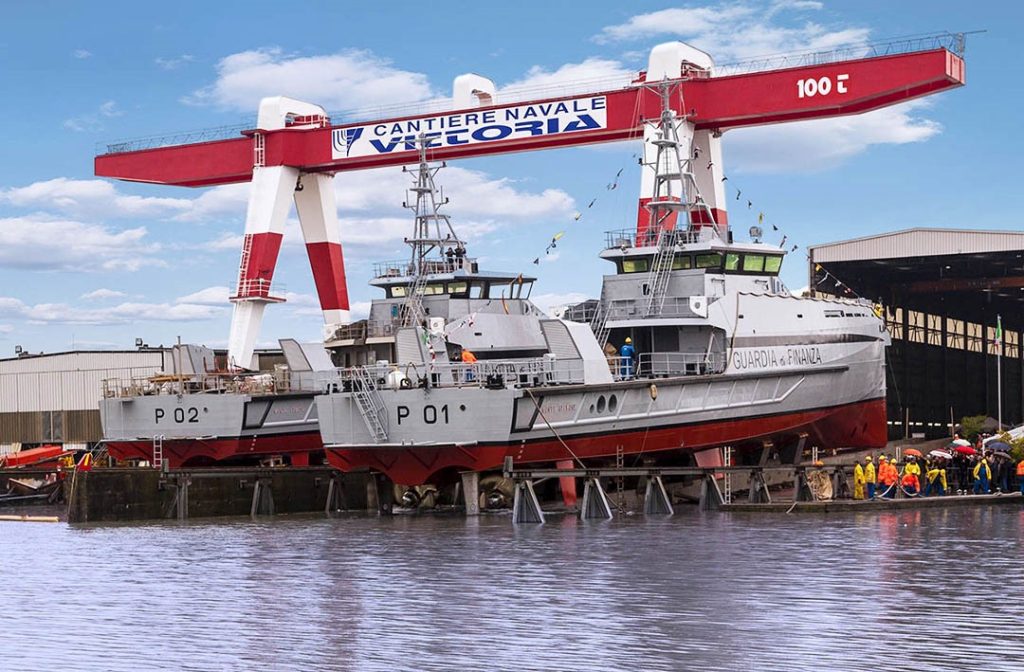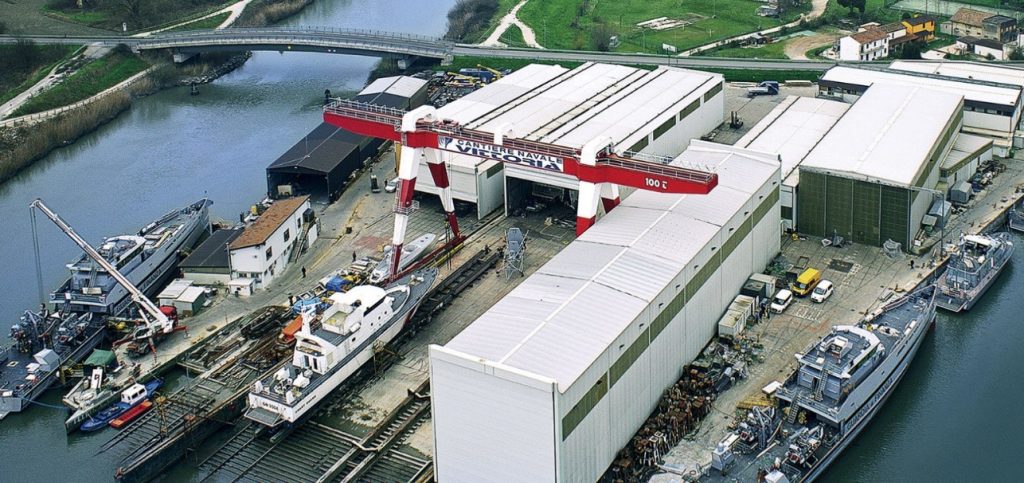

Cantieri Navali Vittoria
Vittoria Shipyard was created in 1927 through the initiative of the family Duò, the soul of the Vittoria Shipyard. All the three generations, who have run until today, have worked continuously toward product innovation. The workspace, set in Via Leonardo Da Vinci in Adria, extends across a 22.000 meters surface, 8.000 of which are covered by mobile hangars that allow production to continue on different projects simultaneously, without restraint from the external climate. Vittoria Shipyard’s security boats are the flagships chosen by police and coast guards of many Mediterranean countries. In particular, the most requested ships are Search and Rescue boats (SAR boats), which are unsinkable and self-righting. In those recent years, more than a hundred of vessels have been built for the Coast Guards of Italy, Croatia, Libya, Malta, Cyprus and Tunisia, and they have been used against illegal immigration, smuggling, illegal drug trade, terrorism and also, for the protection of the environment and fishing areas. Concerning defence, Vittoria Shipyard has experienced crafting patrol boats, fast interceptors, and general-purpose guard ships.
The experimental knowledge transfer intervention in brief
The experimental intervention focused on the analysis of internal processes in order to proceed with their progressive digitalization in view of what is foreseen by Industry 4.0. In particular, within the intervention were analysed some internal procedures such as:
- Purchase request
- Purchase of materials
- Storage flows of incoming materials
- Withdrawal operations for production.
The analysis allowed to highlight some activities with no added value and suggest a series of improvements to be made. In detail the company has identified a number of redundant procedures during the purchase phase. In particular, through the study of orders, a very high fragmentation emerged, many orders of low value. The improvement implementation foresees a Web platform where some suppliers can see the stock available at CNV and restore the materials. The work carried out directly on site, in shipyard headquarter, also brought to light the difficulty of tracking materials from the moment they were delivered by suppliers. The improvements suggested consist of greater traceability using barcode identification systems and radio frequency readers. Every activity carried out by the readers (loading, unloading and transfer) would then be reported and recorded by the management. Finally, the layout of the warehouse itself has been revised in order to improve operational performance and reduce some waste of time and space.
Some feedbacks
The shipyard has quantified orders in greater detail in order to rationalise its activities. It has also implemented a plan to reorganise the warehouse by developing a new layout. At the moment the shipyard is collecting offers to adapt its management to the adoption of a communication platform with its suppliers. According to the expert the companies’ human resources involve in the experimental intervention showed proactivity in the applications explained as well as direct interest. In addition, company’ profiles with different functions were involved to receive more information about the procedures analysed.
Timeframe
23.04 – 02.11.2020
Region
Veneto region, Italy
Company profile
Shipyard located in Adria
Companies’ resources involved
President & Production Manager; CEO & Production Manager; HSE & IT Manager; Quality System Manager & Sales; Technical IT Manager; Purchasing Manager
Typology
Transformation in-company intervention (32 h.) for applied knowledge into company of selected 4.0 technologies
Experts’ profiles
Prof. with Degree in Computer Engineering, PhD and Specialization Course in Management Engineering at the University of Padua who is also ELA (European Logistics Association) Certified and Management Consultant in the areas of strategies, business operations, logistics and warehouse organization
Focus
Logistics, Human Resources Development and Cybersecurity
